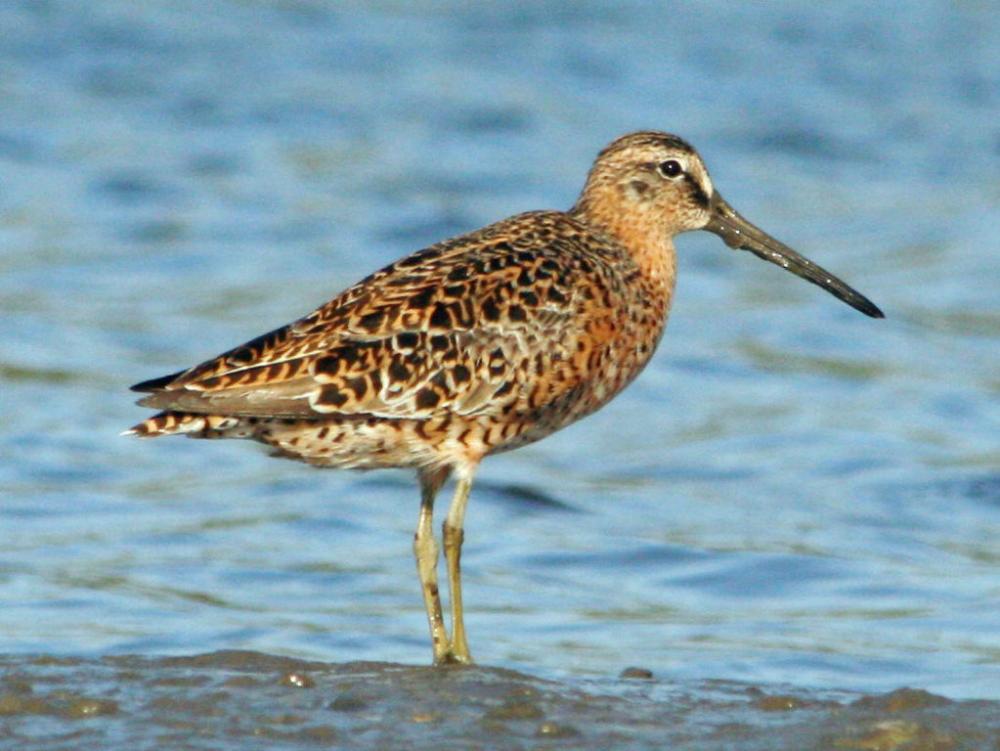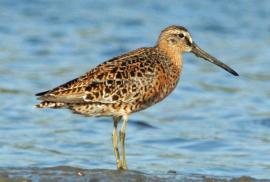Guide to Boreal Birds
Overview
These are among the first shorebirds to migrate south, with adult Short-billed Dowitchers leaving as early as July and the young following in August. Dowitchers often occur in large flocks-sometimes in the thousands-on coastal flats during migrations, remaining well bunched whether in flight or feeding on a mudflat. They probe deeply with their long bills, with rapid up-and-down movements like sewing machines, seeking marine worms, snails, tiny crustaceans, and aquatic larvae.
Description
12" (30 cm). A snipe-like, long-billed shorebird with white lower back and rump, black-and-white checkered tail, dark bill, green legs. Summer adults have reddish underparts (belly often whitish) with variable spotting on breast and sides, barred flanks, and reddish edges on feathers of upperparts. Winter birds are gray overall, with pale eyebrow and white lower back and rump. See Long-billed Dowitcher.
Voice
A soft tu-tu-tu, quite unlike call of Long-billed Dowitcher.
Nesting
4 greenish eggs, spotted with brown, in a nest lined with grass and moss in a depression on the ground.
Habitat
Breeds on moist tundra or beside forest pools; visits mudflats, creeks, salt marshes, and tidal estuaries during migration and in winter.
Range/Migration
Breeds in southern Alaska, central interior Canada, and northern Quebec. Winters along coast from California and Virginia southward.



